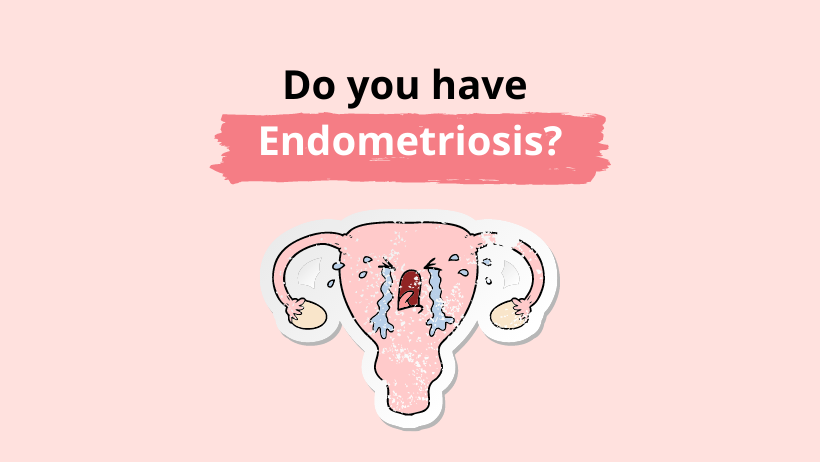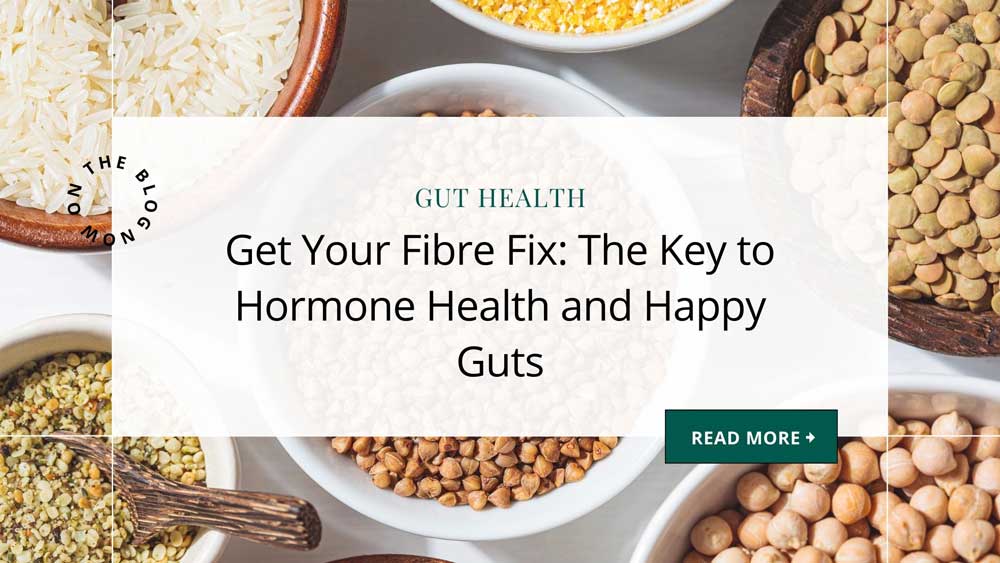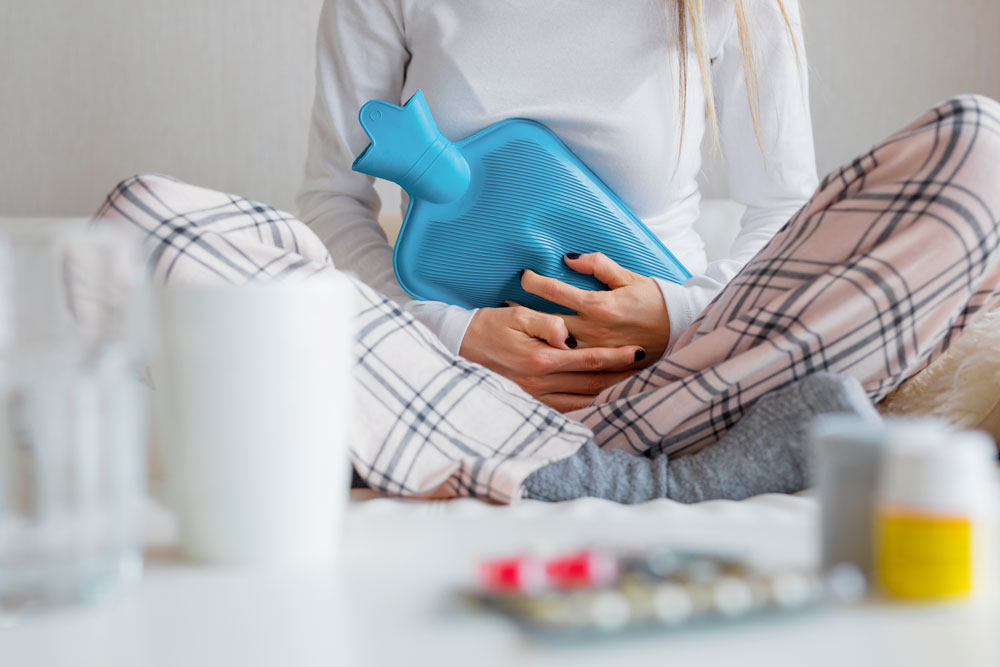Do you experience painful periods that are progressively getting worse?
Despite what you might have been told, period pain is not normal and could be a sign of an underlying condition called Endometriosis.
Unfortunately as a society, women are told from a young age that period pain is normal and are taught to manage it with heat packs, pain medication or the oral contraceptive pill. For some this can be really detrimental, as ‘normal period pain’ could actually be a sign of endometriosis, an inflammatory disease that can worsen over time and lead to infertility in the long term.
Did you know that one in ten women are diagnosed with Endometriosis, taking on average 6.5 years to diagnose (previously this was 7-12 years).
As its Endometriosis awareness month, I want to provide awareness around the signs and symptoms of this debilitating condition whilst creating awareness on a Naturopathic approach to managing it.
What is Endometriosis?
Endometriosis occurs when endometrial like tissue, similar to the lining of the uterus which sheds and creates your period each month, is found outside of the uterus where it shouldn’t be.
These endometrial lesions can be found on the ovaries, fallopian tubes, cervix, rectum, bowel and bladder. Endometrial tissue has also been found in distant locations including the lung and diaphragm, spleen, gall bladder, stomach and the breast.
During your period, the normal placement of the endometrium in the vagina starts to shed producing your period. At the same time, the misplaced endometrium also breaks down, but sheds in the pelvic cavity driving inflammation and pain. This can also lead to painful adhesions and scarring.
What Are the Symptoms of Endometriosis?
Endometriosis is an inflammatory condition with a broad range of symptoms depending on the location of the endometrial tissue. By far the most debilitating symptom associated with Endometriosis is pain.
You may experience:
- Heavy or dull dragging sensation in the pelvis premenstrually – this is due to progesterone which increases the volume of endometriotic tissue (also creating bloating)
- Pain during the period can become sharper and more cramp like
- Pain can be severe enough to cause fainting, vomiting and diarrhoea
- Pain can often be present during sex
Those with stage 3 or 4 endometriosis, can experience pain when passing a bowel motion or upon urinating due to endometrial tissue infiltrating the bowels or rectum. This pain is usually experienced during a period.
Other common symptoms of Endometriosis are:
- Heavy periods
- Bleeding between periods
- Bloating
- Nausea
- Difficulty falling pregnant
What Causes Endometriosis?
Unfortunately it isn’t extremely clear what drives Endometriosis in the first place, but there are a few theories below, some that have been around for some time whilst others are based on emerging research.
1. Retrograde flow (when blood flows back into the pelvis instead out through the vagina)
Women who have a blockage which restricts menstrual flow such as congenital abnormalities, adhesions, or a hymen that hasn’t perforated properly have a higher incidence of endometriosis. Also those who experience painful periods have stronger uterine contractions which can increase retrograde flow.
2. Inflammation
It isn’t clear whether inflammation causes Endometriosis or if it’s simply a result of the endometrial lesions (or both). Generally, there is an increase in inflammatory markers found in women with endometriosis which increases the growth of endometrial cells.
3. Oestrogen excess
Higher levels of oestrogen stimulate a thicker endometrium, which means menstrual flow is heavier increasing the risk of pelvic contamination. Additionally, endometrial lesions produce oestrogen locally which drives pain and inflammation itself.
4. Unhealthy gut bacteria
A higher level of gram negative bacteria have been found in the digestive system of women experiencing endometriosis. This is called the ‘microbial hypothesis’ where bacteria can migrate from the digestive system to the pelvic cavity due to intestinal permeability (also known as leaky gut syndrome) driving inflammation.
5. Auto-immunity
It’s hard to know what goes first, whether it’s the autoimmune response that drives endometriosis or if it’s a result of the endometrial lesions. But there have been a number of studies which have reported auto-antibodies to endometrial tissue.
Dietary and Lifestyle Risk Factors Associated with Endometriosis
These dietary and lifestyle factors have been associated with increased risk of Endometriosis.
- Intense physical activity during exercise: Women who engaged in strenuous exercise during menstruation had an increased risk of endometriosis which is thought to be related to increased retrograde flow.
- Alcohol: Alcohol consumption has been shown in two studies to be higher in women who have endometriosis compared to those that did not have this condition. The reason hasn’t been determined, but what we do know is that high alcohol consumption increases oestrogen recirculation in the body and drives inflammation and bad bacterial overgrowth (dysbiosis) in the digestive system.
- Caffeine: There is a significant risk of infertility due to endometriosis in women who drank more than 2 cups of coffee or 4 cups of tea per day.
- Sex during menstruation: An American study found that there was a correlation between women with endometriosis and intercourse during the course of their period.
- Tampon use: Though it’s unlikely that tampon use has a significant correlation with endometriosis, there was a link found with long term use (over 14 years) of tampons with endometriosis.
A Naturopathic Approach
Though the gold standard treatment for Endometriosis is successful excision of endometrial lesions, 30% of women can experience a recurrence of endometriosis with in 5 years after surgery.
Naturopathically when I am supporting women with Endometriosis, we aim to look at the underlying causative factors that may have lead to the condition in the first place. My approach would consider the following:
- Assessing the microbiome to determine if there is an overgrowth of gram negative bacteria that could be migrating to the pelvic cavity driving endometriosis. If so we would aim to bring the microbiota to a healthier balance between good and bad bacteria. I often will recommend a Complete Microbiome Map to assess the health of the digestive.
- Improve oestrogen clearance through the liver and bowel with dietary recommendations and herbal medicine support.
- Support healthy progesterone levels to reduce oestrogen excess.
- Reduce inflammation through diet, exercise and herbal medicine.
- Consider food sensitivities such as casein and gluten which could be exacerbating an autoimmune type response.
By addressing Endometriosis holistically, a significant reduction in pain, heavy bleeding, bloating, and diarrhoea/constipation is often improved.





